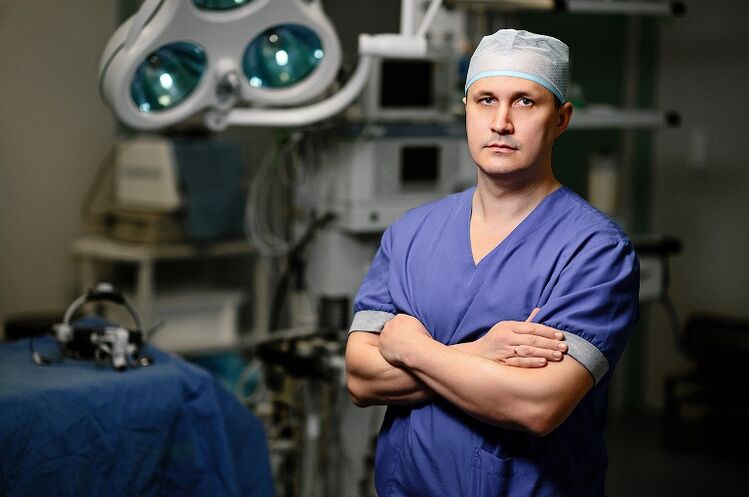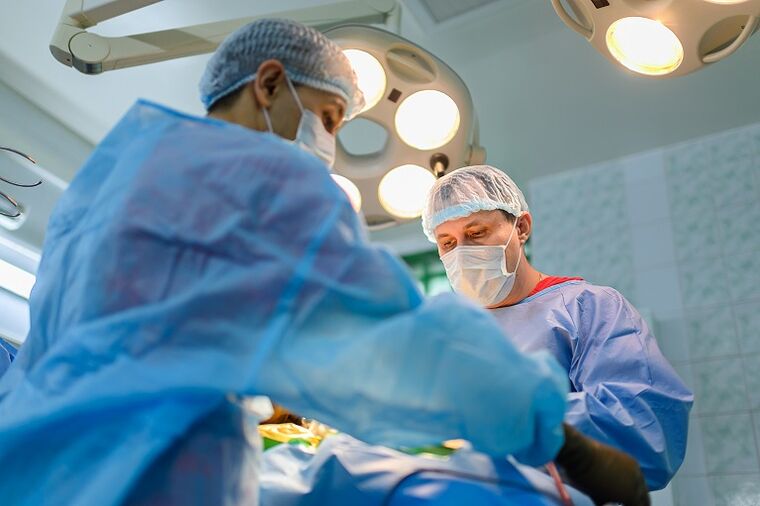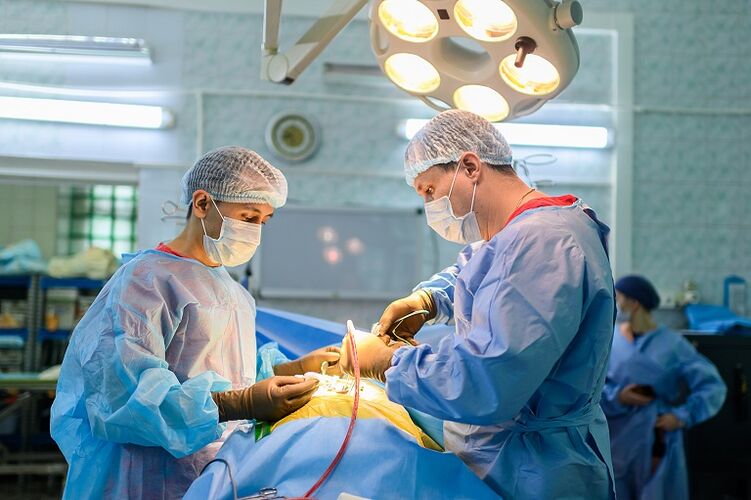The expert talks about modern approaches to the treatment of patients with osteochondrosis of the cervical spine

Alexey Peleganchuk, head of the neuroorthopedic department, orthopedic traumatologist, neurosurgeon, MD, talks about what technologies are available to doctors today to help such patients.
What disease do patients usually call "cervical chondrosis"? What is the correct diagnosis?
- In fact, "cervical chondrosis" is slang, the disease is properly called "osteochondrosis of the cervical vertebrae". This term is used by doctors in the post-Soviet space and corresponds to the current ICD (International Classification of Diseases) according to which we work. However, in most countries, such a disease does not exist, they call it "degenerative-dystrophic disease". When we make the diagnosis, we indicate "osteochondrosis of the cervical spine" and then decipher which segments of the spine are affected.
Most often, people associate this disease with pain in the cervical vertebrae. Is this the main and/or only symptom?
– The most common reason such patients visit a neurologist is pain. We can say that the main clinical manifestation of degenerative pathology - osteochondrosis of the cervical spine, in this case is pain. In addition, even more dangerous manifestations of general degenerative pathologies are the weakness of the upper limbs (perhaps in the lower limbs) and impaired sensitivity - numbness.
Can headaches and tinnitus occur with osteochondrosis of the cervical spine?
– These are uncharacteristic complaints of cervical osteochondrosis, but sometimes it happens. If such a patient comes, then, first of all, this is a reason to prescribe an MRI of the brain to rule out any organic changes. If the patient has done this, he does not respond to conservative treatment and has a substrate in the form of disc protrusions, which is extremely rare, but can cause these phenomena reflexively, then there is an option to help this patient, but the effectiveness will be significantinferior to the classical treatment of cervical spine pain.

What are the causes of pain and what options are there today for treating such patients?
– Three groups of patients can be distinguished. The first group are reflex pain syndromes, the second group are root syndromes, myelopathy - lesions of the spinal cord itself, as in severe stenosis, and the third are extremely rare patients, but the most complex, the patients with neuropathy suffer the most.
Reflex pain syndrome may spread locally in the cervical region and may radiate to the shoulder girdle and upper extremities. But the peculiarity of this pain syndrome is that the nerve tissue - namely the spinal cord and its roots - is without compression (without compression).
Accordingly, in this case, if we consider the possibility of surgical treatment, then these are outpatient methods - for example, blockades. More invasive procedures include radiofrequency denervation and cold plasma intervertebral disc coblation, an instrumented puncture procedure that is performed without incisions.
The goal is to eliminate the pain syndrome or significantly reduce its intensity and free the patient from the need for analgesics.
The second group of patients are hernia patients. A hernia in the cervical spine can lead to compression of the roots and, if conservative treatment methods are ineffective, surgery is resorted to. The purpose of the operation is to perform decompression, i. e. remove the hernia, respectively, the root of the spinal cord will be free and the pain syndrome will regress.
With large hernias, there are also conduction disorders: in addition to the compression of the root of the spinal cord, the spinal cord itself can be compressed (compressed). Then a person experiences more severe clinical manifestations in the form of tetraparesis, i. e. weakness in both upper and lower limbs. In this case, it is necessary to do decompression - to create spare spaces for the spinal cord so that it can recover a second time. It is important to understand that the operation does not restore the spinal cord and nerve, but creates conditions, i. e. reserve spaces.
In addition to the hernia, there are circular stenoses. They develop due to complex problems that occur in the cervical spine, which leads to a circular narrowing of the canal.
These are severe patients who sometimes suffer for years and, unfortunately, most often present with severe neurological deficits and often require a two-stage operation.
And another group of patients are people with neuropathic pain syndrome. In this case, patients, in the absence of stenosis, have neuropathy (the nerve itself hurts). Then help is provided through neuromodulation (neurostimulation). It involves installing special epidural electrodes on the posterior structures of the spinal cord. This is a special device - you can say, like physiotherapy, which you always have with you: you can turn it on and increase the power to reduce pain. And this helps well even in very difficult cases.
All these technologies are available to patients, there are various sources of funding, including mandatory medical insurance and quotas for high-tech medical care.
Can osteochondrosis be cured?
– The disease itself, osteochondrosis, cannot be treated. What can be done? Let's say a conditional patient: osteochondrosis of the cervical spine with a predominant lesion at the level of the C6-C7 vertebra, degenerative stenosis at this level and with compression of the roots of the C7 spinal cord on the right.
During the operation, it is possible to remove the stenosis, remove a hernia or decompress the root of the spinal cord if the spinal cord itself is compressed. But the first four words of the diagnosis (osteochondrosis of the cervical spine) will remain for life, because it is incurable. Surgeons influence the substratum of this clinic, and the substratum of the clinic is, say, a hernia that has led to a stenosis.
How is the treatment strategy determined?
- There is such a concept - clinical-morphological correspondence. The doctor must examine the patient from all sides - perform an orthopedic examination, a neurological examination, collect anamnesis, complaints - and compare these data with research.
Screening tests for osteochondrosis of the cervical spine are MRI, unless this test is contraindicated for the patient for one reason or another. If necessary, MSCT is also prescribed to determine the tactics of the operation.
However, not every hernia that is seen on an MRI requires surgery. The hernia itself is not a reason for surgery. The specialist must determine how much it causes compression, etc. and decide on the feasibility of the operation.
At what age do such problems most often appear?
– The average age of our patients is over forty years, but it also happens that young people need surgical intervention if their degenerative cascade started early, which led to the formation of a substrate in the form of a hernia. In this case, the first step is conservative treatment, and if there is no effect, then the only option is surgery.
What are the risk factors?
– We do not live in India and our compatriots do not wear anything on their heads. Therefore, it is not necessary to say that work or habits lead to premature wear and formation of these formations.
The main risk factor is genetic. This applies not only to the cervical, but also to the thoracic and lumbar regions - this is the weakness of the tissues of the fibrous ring. And other risk factors - in the form of excess body weight, extreme work - are more reflected in the lumbar region.
Is it somehow possible to prevent it?
- Prevention is first of all physical therapy, so that there is tone in the muscles, the muscles work properly and there are no spasms. The fact is that when a degenerative process develops, and it can develop both in the discs and in the joints of the spine, it leads to muscle spasm and a person experiences pain. This is why massage, acupuncture, etc. are good for reflex pain syndrome.

What determines the effectiveness of treatment?
– It is important to consult a neurologist in time if there is a problem: pain in the cervical spine that spreads to the upper limbs, numbness and weakness in the hands, reduced strength. Very serious pathologies are circular stenosis, when weakness in the lower limbs is added, when the spinal cord is already affected.
It happens that people suffer for years and think that it is simply "related to age". But every year they get worse and as a result the disease leads to the fact that they have limitations in movement - they can only walka few meters away.
The specialist will assess the degree of danger and, if necessary, refer to additional research methods and, if indicated, to a vertebrologist who deals with the surgical treatment of spinal pathology. The purpose of the consultation is to determine the need for operative intervention. If there is no need for surgery, then the neurologist is already engaged in conservative treatment. If surgical treatment is necessary, an operation is performed, after which the patient is sent for rehabilitation to a neurologist.
The goal of conservative treatment is to achieve very long periods of remission and to minimize the frequency of exacerbations, both in duration and frequency. This also applies to puncture methods of treatment. But if there are already gross changes in the form of herniation and compression of the roots of the spinal cord, then conservative treatment may not work.
At the same time, the operation must be timely. The goal of the operation is to save the nerve tissue, be it the spinal cord or its roots. If a person is sick for years, this leads to myelopathy - a change in the spinal cord itself, which then, even with excellent surgery, may not recover, or to radiculopathy - damage to the root of the spinal cord.
If the operation is performed on time, according to the standards, then there is a high probability of recovery of both the root of the spinal cord and the spinal cord itself, and the person after rehabilitation will feel practically healthy.
With advanced pathology, the effectiveness of surgical intervention decreases. In the case of persistent neurological disorders, surgery may not make noticeable progress because the spinal cord or root itself has already died by the time of surgery.
Each patient with one or another variant of the pathology needs a personal consultation with a specialist. At the same time, most patients with cervical osteochondrosis can be helped without surgery, using complex conservative treatment methods.
























